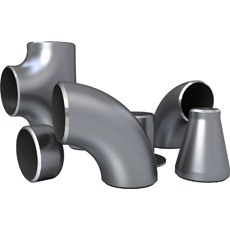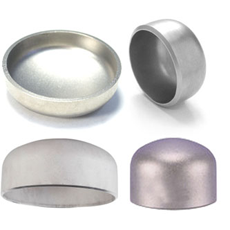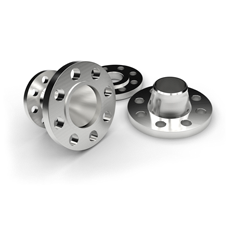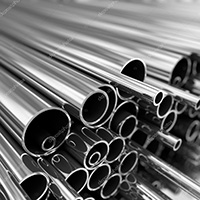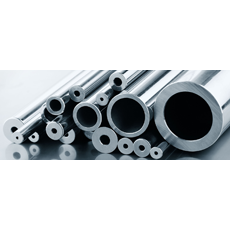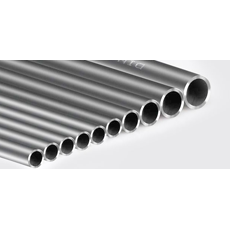General
SAM GLOBAL KIMIYA SANAYI VE TICARET offers a comprehensive range of products in their valve, fittings, flange, pipe, and tube category. Their inventory includes various types of valves, high-quality fittings for diverse applications, robust flanges for secure connections, and a wide selection of pipes and tubes designed to meet the needs of various industries. Their product lineup ensures reliability, durability, and performance across multiple industrial and commercial applications.
Valves
Valves are crucial for controlling fluid flow in various applications. Understanding the different types of valves and their specific uses helps in selecting the right valve for a given application. Whether it’s for simple on/off control, precise flow regulation, or preventing backflow, there is a valve designed to meet those needs.





A valve is a device that regulates, directs, or controls the flow of fluids (liquids, gases, slurries) by opening, closing, or partially obstructing various passageways. Valves are essential components in various industries, including water and sewage processing, mining, power generation, processing of oil, gas, and petroleum, food manufacturing, chemical and plastic manufacturing, and many other fields.
A ball valve uses a spherical disc (the ball) to control the flow through it. The ball has a hole or port through the middle so that when the port is aligned with both ends of the valve, flow will occur.
Application: Widely used in industries due to their reliability and ease of operation, ideal for on/off control without pressure drop.
A gate valve uses a gate (a flat or wedge-shaped barrier) to control the flow of fluid. When the gate is lifted from the path of the fluid, flow occurs.
Application: Suitable for applications where minimum pressure loss and a free bore is needed, often used in water, oil, and gas pipelines.
A globe valve uses a movable plug (stem) that can be screwed in or out, which seats into a baffle to control flow. The design allows for precise flow control.
Application: Typically used for regulating flow in pipelines, ideal for applications requiring frequent adjustment.
A check valve allows fluid to flow in one direction only, preventing backflow. It typically operates automatically.
Application: Commonly used in systems where backflow would cause problems or damage, such as in water and wastewater treatment.
A butterfly valve uses a rotating disc to regulate flow. When the valve is closed, the disc is turned so that it completely blocks the passageway.
Application: Often used in large pipe diameters, suitable for applications requiring quick shut-off, such as water and gas supply systems
A needle valve has a slender, pointed, needle-like plunger that fits into a conical seat, allowing for precise flow regulation.
Application: Used for fine adjustments in the flow of gases or liquids, often found in carburetors and laboratory equipment.
| Valve | |
|---|---|
| Material | Carbon Steel – Stainless Steel – Titanium – Titanium Hastelloy – Galvanized – Alloy Steel – Cast Iron – Brass – etc. |
| Grade | WCB – LF2 – LCC – LCB – CF8 – CF8M – CF3 – WC6 – CF 10 – etc. |
| Class | 150 – 300 – 600 – 800 – 900 – 1500 – 2500 – 3000 |
| Size | ½ ” to 60 “ |
| End Connection | SW – BW – NPT – FLG – etc. |
| Standard | ANSI – ASTM – BS – DIN – JIS |
Fitting
Fittings play a crucial role in the construction and maintenance of piping systems, providing connections, directional changes, and termination points. Understanding the different types of fittings and their specific uses ensures the creation of efficient, durable, and reliable piping networks. Whether you need to change the direction of flow, connect pipes of different sizes, or branch off a main line, there is a fitting designed for the task.
A fitting is a part used in piping systems to connect straight sections of pipe or tube, adapt to different sizes or shapes, and regulate or measure fluid flow. Fittings are essential for creating efficient, functional, and leak-proof piping systems in various industries, including plumbing, gas, oil, and chemical processing.
A reducer is used to connect two pipes of different diameters. There are two main types: concentric (centerline of both ends is the same) and eccentric (centerline of one end is offset).
Application: Used in piping systems where the diameter of the pipe needs to be changed to accommodate different flow rates.
An elbow fitting is used to change the direction of the flow in a piping system, typically available in 45-degree and 90-degree angles.
Application: Commonly used in plumbing and heating systems to navigate around obstacles and change the direction of pipes.
A tee fitting has a T-shaped design and is used to split or combine fluid flow. It has one inlet and two outlets (or vice versa) at 90-degree angles.
Application: Widely used in plumbing systems to branch off a main line or combine flows from two lines.
A sockolet is a type of branch connection fitting that provides a 90-degree branch from the main run, typically used for smaller pipe sizes.
Application: Used in high-pressure systems and where a socket weld connection is preferred for strength and integrity.
A weldolet is a branch fitting used to create a 90-degree branch connection from the main pipe. It is welded onto the main pipe.
Application: Suitable for high-pressure applications, providing a stronger connection than other types of branch fittings.
A terdolet is similar to a weldolet but used to create a branch connection at a 45-degree angle from the main pipe.
Application: Used when a 45-degree branch connection is needed in piping systems, typically in areas with space constraints or specific design requirements.
A nipple is a short piece of pipe with male threads on both ends, used to connect two fittings or pipes.
Application: Commonly used in plumbing to extend pipe runs or as a connector between two fittings.
A cap fitting is used to close the end of a pipe, effectively sealing it off.
Application: Used in plumbing and piping systems to terminate a pipe, preventing fluid flow beyond that point.
| Fitting | |
|---|---|
| Size | ½ ” to 60 “ |
| Material | Carbon Steel – Stainless Steel – Titanium – Titanium Hastelloy – Galvanized – Alloy Steel – etc. |
| Grade | WPB – WPHY – WPL6 – F304 – F316 – F11 – F22 – F9 – etc. |
| Connection | Butt Welding – Socket Welding – NPT – etc. |
| Standard | ANSI – ASTM – BS – DIN – JIS |
Flange
Flanges are essential components in piping systems, providing connections, access points, and measurement capabilities. Different types of flanges are designed to meet the specific needs of various applications, from high-pressure and high-temperature environments to systems requiring frequent maintenance and inspection. Understanding the functions and appropriate use of each type of flange ensures the efficiency, safety, and reliability of the piping system.
A flange is a method of connecting pipes, valves, pumps, and other equipment to form a piping system. It provides easy access for cleaning, inspection, or modification. Flanges are usually welded or screwed into the piping system and joined with bolts. Various types of flanges are designed to meet specific requirements of different applications.
A welding neck flange has a long tapered hub that is welded to the pipe. This type of flange is designed to reduce stress concentration and provide reinforcement at the weld.
Application: Ideal for high-pressure applications and high-temperature environments where the flange needs to withstand extreme conditions.
A spectacle flange consists of two metal discs connected by a small section of metal. One disc is solid (blind) and the other is a ring (spacer). The solid disc can block flow, while the ring allows flow.
Application: Used in systems that need frequent separation of piping sections for maintenance or inspection, allowing easy switching between blocking and allowing flow.
An anchor flange is used to anchor or secure a section of pipe to prevent movement due to thermal expansion or other forces.
Application: Commonly used in pipelines to prevent excessive movement and stress on the system, ensuring stability and integrity.
A lap joint flange is used with a stub end or taft, which fits into the flange. The flange itself is not welded or fixed, allowing easy alignment.
Application: Suitable for systems requiring frequent dismantling for inspection and cleaning, often used in low-pressure applications.
A blind flange has no opening and is used to close the end of a piping system or a pressure vessel opening.
Application: Used to terminate a pipeline, providing a method to inspect or maintain the system, or to prevent flow.
A socket welding flange has a socket where the pipe is inserted and then welded around the outside. It is used for small-diameter, high-pressure piping.
Application: Suitable for small pipes carrying high-pressure fluids, providing a strong and leak-proof connection.
A threaded flange has threads inside the bore that match the external threads of the pipe. It can be screwed onto the pipe without welding.
Application: Used in systems where welding is not feasible or practical, such as in low-pressure, non-critical applications.
A slip-on flange slides over the pipe and is then welded both inside and outside to provide strength and prevent leaks.
Application: Easier to align than welding neck flanges, used in low-pressure applications where ease of installation is a priority.
An orifice flange is used in conjunction with orifice meters to measure the flow rate of liquids or gases in a pipeline.
Application: Commonly used in flow measurement applications, allowing for the precise measurement of fluid flow.
| Flange | |
|---|---|
| Size | ½ ” ~ 60 “ |
| Material | ASTM A105 – A182 – A325 – A694 – etc. |
| Standard | ASME B16.5 – B16.47 – B16.48 |
| class | 150 – 300 – 400 – 600 – 900 – 1500 – 2500 |
Pipe & Tube
Pipes and tubes are cylindrical structures used to transport fluids (liquids and gases) and solids. Although the terms “pipe” and “tube” are often used interchangeably, there are distinct differences between them based on their applications, dimensions, and manufacturing standards.
Pipes:
Purpose: Primarily used for transporting fluids (liquids and gases) in various industries such as oil and gas, water supply, chemical processing, and construction.
Measurement: Pipes are generally measured by their nominal diameter (inside diameter) and schedule (wall thickness). This standardization ensures compatibility with fittings and other components.
Manufacturing Standards: Common standards include ANSI, ASTM, API, and others, which define the material, dimensions, and performance criteria for pipes.
Types: Includes welded (ERW, LSAW, SSAW) and seamless pipes made from materials like carbon steel, stainless steel, titanium, alloy steel, and more.
Tubes:
Purpose: Used in a wide range of applications, including structural purposes (construction, engineering), heat exchangers, medical devices, and automotive industries.
Measurement: Tubes are typically measured by their outside diameter and wall thickness. They are often specified with precise dimensions and tolerances to meet specific requirements.
Manufacturing Standards: Tubes are produced according to standards such as ASTM, BS, DIN, and JIS, ensuring high precision and quality for various applications.
Types: Includes welded and seamless tubes made from similar materials as pipes, such as carbon steel, stainless steel, titanium, and alloys.
| Pipe & Tube | |
|---|---|
| Size | ½ ” to 60 “ |
| Type | Welded (ERW, LSAW, SSAW) – Seamless |
| Material | Carbon Steel – Stainless Steel – Titanium – Titanium Hastelloy – Galvanized – Alloy Steel – etc. |
| Standard | ANSI – ASTM – BS – DIN – JIS |
Key Differences:
Measurement: Pipes are measured by their nominal diameter and schedule, while tubes are measured by their outside diameter and wall thickness.
Applications: Pipes are primarily used for fluid transport, whereas tubes are used for both structural and fluid transport purposes.
Tolerances: Tubes often have tighter tolerances and are specified with precise dimensions compared to pipes.
In summary, while pipes and tubes serve similar functions, their differences in measurement, application, and manufacturing standards make them suitable for specific uses in various industries.
| Specification | Commentary | Grade |
|---|---|---|
| A106 | Steamless C-Steel Pipe for High Temperature Service | A & B |
| API 5L | Line Pipe | A, B, X42, X46, X52, X60, X65, X70, X80 |
| A53 | Welded & Steamless Steel Pipe | A & B |
| A333 | Steamless & Welded Pipe for Low Temperature Service |
|
| A335 | Steamless Ferric Alloy Steel Pipe for High Temperature Service |
|
| A691 | Electric Fusion Welded C & Alloy Steel Pipe for High Temperature Service | |
| A312 | Steamless & Welded Austenitic Stainless Steel Pipe |
|
| A358 | Electric Fusion Welded C & Alloy Steel Pipe for High Temperature Service |
|















